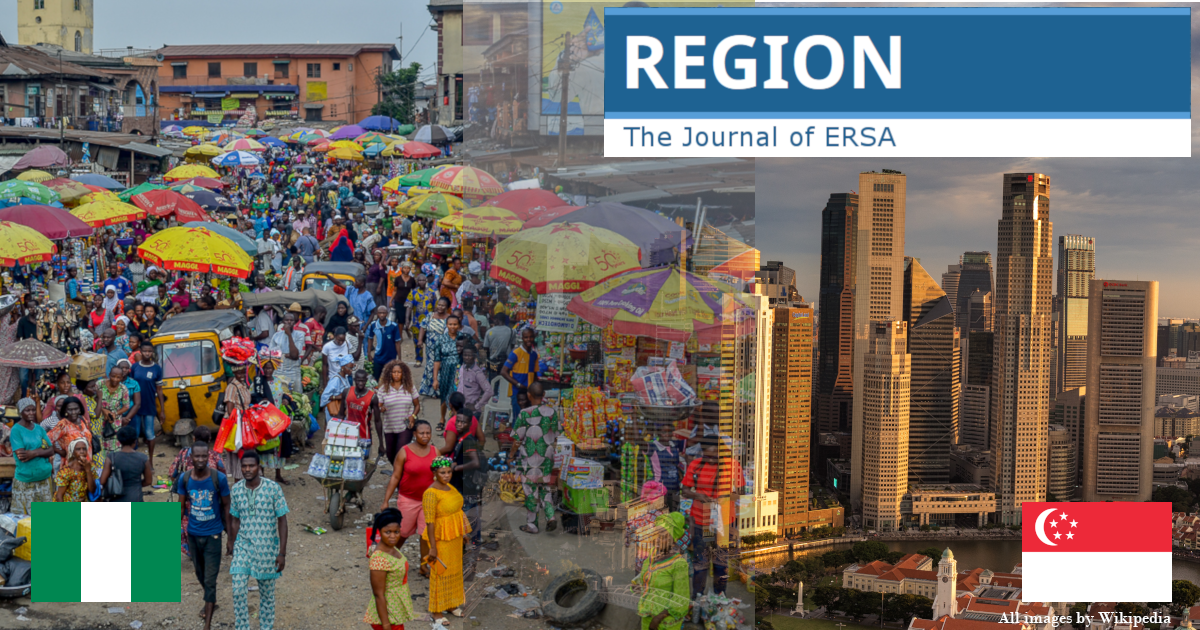Adapting the Singapore Model to Nigeria’s Urban Management
Possibilities and Challenges
DOI:
https://doi.org/10.18335/region.v9i1.359Abstract
Nigeria and Singapore are two countries that bear some historical similarities as well as differences. Singapore has emerged as a poster child for sustainable urban development while Nigeria lags very far behind in this area. This paper analyses if, and what lessons can be drawn from Singapore to inform and improve Nigeria’s urban planning and management. Improving Nigeria’s urban planning sector is especially important considering its projected additional urban growth of 226 million by 2050. The paper employs a qualitative review of existing literature and finds that relevant lessons could be drawn from Singapore’s urban planning to positively influence sustainable urban planning in Nigeria. The contextual similarities between the countries and the current planning system in place make the chances of success high. The paper advocates a planning reform focused on adequately implementing Master Plans, strengthening its planning institutions and appropriate development control, and putting in place strong disincentives for corruption to promote sustainable urban planning and improve urban conditions and sustainability.

Downloads
Published
How to Cite
Issue
Section
License
Copyright (c) 2022 Adaku Jane Echendu

This work is licensed under a Creative Commons Attribution 4.0 International License.
REGION is an open journal, and uses the standard Creative Commons license: Copyright We want authors to retain the maximum control over their work consistent with the first goal. For this reason, authors who publish in REGION will release their articles under the Creative Commons Attribution license. This license allows anyone to copy and distribute the article provided that appropriate attribution is given to REGION and the authors. For details of the rights authors grant users of their work, see the "human-readable summary" of the license, with a link to the full license. (Note that "you" refers to a user, not an author, in the summary.) Upon submission, the authors agree that the following three items are true: 1) The manuscript named above: a) represents valid work and neither it nor any other that I have written with substantially similar content has been published before in any form except as a preprint, b) is not concurrently submitted to another publication, and c) does not infringe anyone’s copyright. The Author(s) holds ERSA, WU, REGION, and the Editors of REGION harmless against all copyright claims. d) I have, or a coauthor has, had sufficient access to the data to verify the manuscript’s scientific integrity. 2) If asked, I will provide or fully cooperate in providing the data on which the manuscript is based so the editors or their assignees can examine it (where possible) 3) For papers with more than one author, I as the submitter have the permission of the coauthors to submit this work, and all authors agree that the corresponding author will be the main correspondent with the editorial office, and review the edited manuscript and proof. If there is only one author, I will be the corresponding author and agree to handle these responsibilities.




